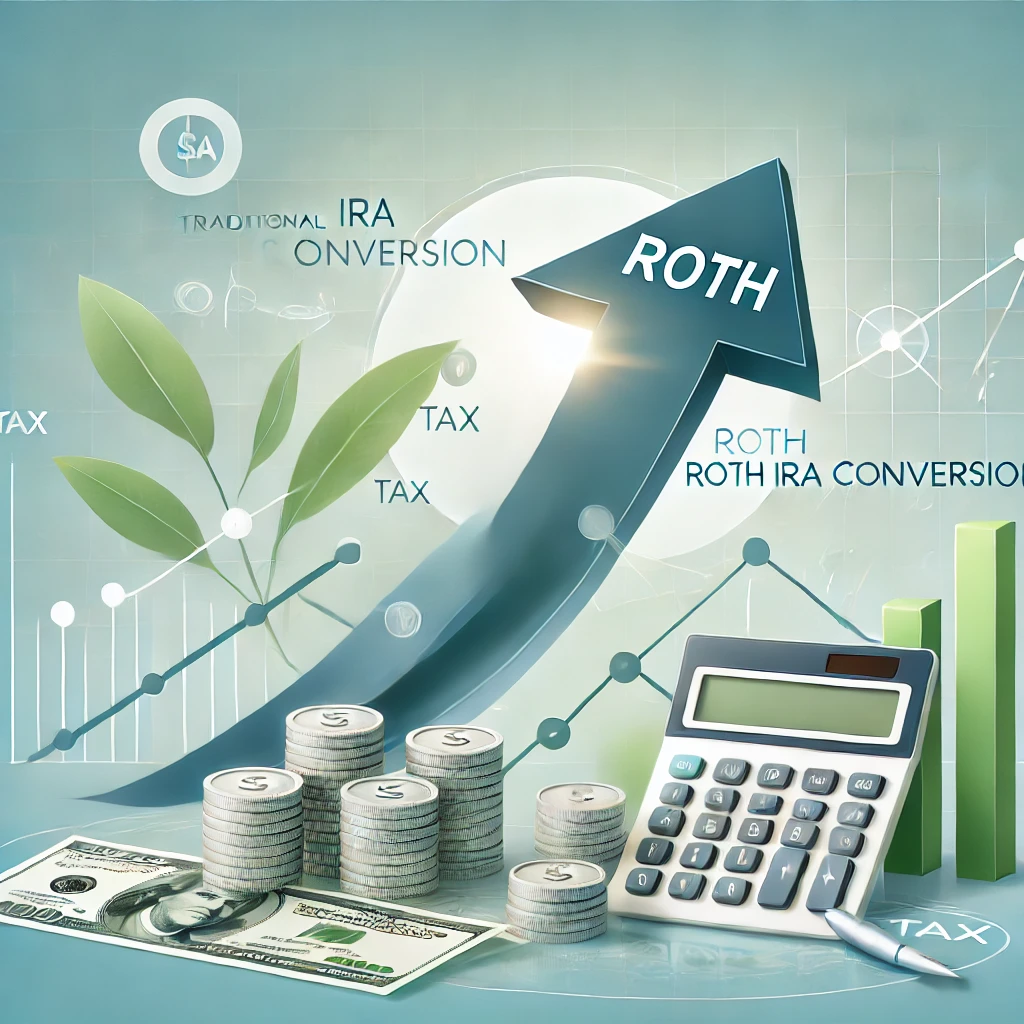
Roth conversions can be a powerful tool for securing a tax-free retirement income, especially when your financial plans span both the U.S. and Canada.
In this guide, we explain what a Roth conversion is, how taxes impact the process, and why timing is crucial. We also examine potential pitfalls and explore why this strategy is particularly beneficial for those planning to retire in Canada.
What Is a Roth Conversion?
A Roth conversion is the process of transferring funds from a traditional IRA or 401(k) into a Roth IRA. Unlike traditional accounts, which are funded with pre-tax dollars and taxed upon withdrawal, Roth IRAs are funded with after-tax dollars, and withdrawals in retirement are tax-free.
How Taxes Work in a Roth Conversion
When you convert funds to a Roth IRA, the converted amount is treated as taxable income in the year of the conversion. For example, if you convert $50,000 from a traditional IRA to a Roth IRA, that $50,000 will be added to your taxable income for the year, potentially bumping you into a higher tax bracket.
The key question is: Will you pay less in taxes now than you would during retirement?
The Bigger the Tax Bracket Difference, the Bigger the Benefit
The primary benefit of a Roth conversion comes from the difference in tax rates between now and retirement. If your tax rate is lower today than it will be when you withdraw funds, a Roth conversion makes sense.
Conversely, if your tax rate is the same or higher now than in retirement, the conversion might result in unnecessary taxes. Roth conversions are typically done in low-income years such as between when you retire and when you take Social Security and Required Minimum Distributions, or RMDs.
Here’s a simplified visual of U.S. income tax brackets for 2024:
| Tax rate | Single | Married filing jointly |
| 10% | $0 to $11,600 | $0 to $23,200 |
| 12% | $11,601 to $47,150 | $23,201 to $94,300 |
| 22% | $47,151 to $100,525 | $94,301 to $201,050 |
| 24% | $100,526 to $191,950 | $201,051 to $383,900 |
| 32% | $191,951 to $243,725 | $383,901 to $487,450 |
| 35% | $243,726 to $609,350 | $487,451 to $731,200 |
| 37% | $609,351 or more | $731,201 or more |
The larger the spread between your current tax rate and your expected tax rate in retirement, the more valuable the Roth conversion can be.
For example, someone who retires at 65, lives off of their cash reserves and taxable investments, takes Social Security at age 70, and doesn’t take any IRA or 401(k) distributions until Required Minimum Distributions kick in (currently age 73), they have five to eight years to make Roth contributions with little to no tax to pay. Most people are in the 12% or 22% tax brackets in retirement.
The Time Value of Money: Why Timing Matters

When you pay taxes on a Roth conversion, that money is no longer available to grow. If you won’t need to take IRA or 401(k) distributions for many years, the growth lost by paying taxes upfront must be outweighed by the tax savings in retirement. In other words, the longer you wait to access tax-deferred retirement funds, the bigger the reduction in tax rate needs to be to justify the conversion.
Potential Pitfalls to Avoid
- Tax Bracket Surprises: A large conversion in a single year could push you into a much higher tax bracket. Consider spreading conversions over several years.
- Medicare Premiums: Increased taxable income could trigger higher Medicare premiums due to IRMAA (Income-Related Monthly Adjustment Amount).
- State Taxes: If you live in a high-tax state now but plan to retire in a state with no income tax, converting is less appealing.
Why Roth Conversions May Make Sense for Those Moving to Canada
For U.S. citizens planning to retire in Canada, Roth conversions can be particularly advantageous due to several key factors:
- Compressed Tax Brackets in Canada: Unlike the U.S., Canadian tax brackets are narrower, which means more income can be taxed at a higher rate.
- No Joint Filing: In Canada, each individual files taxes separately, eliminating the potential benefits of expanded combined tax brackets for married couples.
- Deemed Disposition at Death: Upon death, Canadian residents are treated as if they sold all their assets, potentially triggering significant capital gains and taxable income pushing the deceased into the highest tax bracket on their final return. By holding tax-free Roth IRAs, retirees can reduce the tax burden on their estate and the potential inheritance for their heirs.
- Roth IRAs Are Tax-Free in Canada: Thanks to the Canada-U.S. tax treaty, Roth IRA withdrawals are recognized as tax-free in Canada, making them an ideal vehicle for cross-border retirees.
A Balanced Strategy

Roth conversions can be a powerful tool, but they require detailed analysis and careful planning. Consider:
- The difference between your current and future tax brackets.
- The time horizon until you access IRA and 401(k) funds.
- The implications of cross-border tax rules if retiring in Canada.
Consulting a financial advisor who specializes in Canada-U.S. cross-border planning ensures that your Roth conversion strategy aligns with your long-term goals.
A Roth conversion is more than a financial transaction—it’s a strategic move that can secure tax-free income and reduce long-term tax liabilities.
But timing, tax rates, and cross-border considerations are critical. Whether you’re staying in the U.S. or moving to Canada, working with a professional can help you make the most of this opportunity while avoiding costly mistakes. Reach out to us at 49thparallelwealthmanagement.com if you have tax planning or cash-flow questions. From the Desert to the Tundra, we are your cross-border retirement experts!
Why Roth Conversions Are Ideal for Cross-Border Retirees
For U.S. citizens planning to retire in Canada, Roth conversions offer several cross-border benefits:
- Tax-Free Withdrawals in Canada:
Thanks to the Canada-U.S. Tax Treaty, qualified Roth IRA withdrawals are tax-free in Canada, reducing potential estate taxes upon death. - Mitigating Deemed Dispositions:
Canadian tax rules treat the disposition of assets at death as a taxable event. Holding tax-free funds in a Roth IRA can help minimize this burden. - Optimized Cross-Border Tax Planning:
A well-planned Roth conversion can shield your retirement income from future tax hikes in both countries, aligning your strategy with long-term financial goals.
Conclusion
A Roth conversion is more than a simple transaction—it’s a strategic decision that can provide lasting tax-free income and reduce long-term tax liabilities.
By carefully analyzing your current and future tax scenarios, timing your conversion, and considering cross-border implications, you can maximize the benefits of this strategy. Whether you’re staying in the U.S. or planning a retirement in Canada, consulting with a financial advisor who specializes in cross-border tax planning is essential.
Contact 49th Parallel Wealth Management today to learn how a tailored Roth conversion strategy can help secure your financial future—from the Desert to the Tundra.




